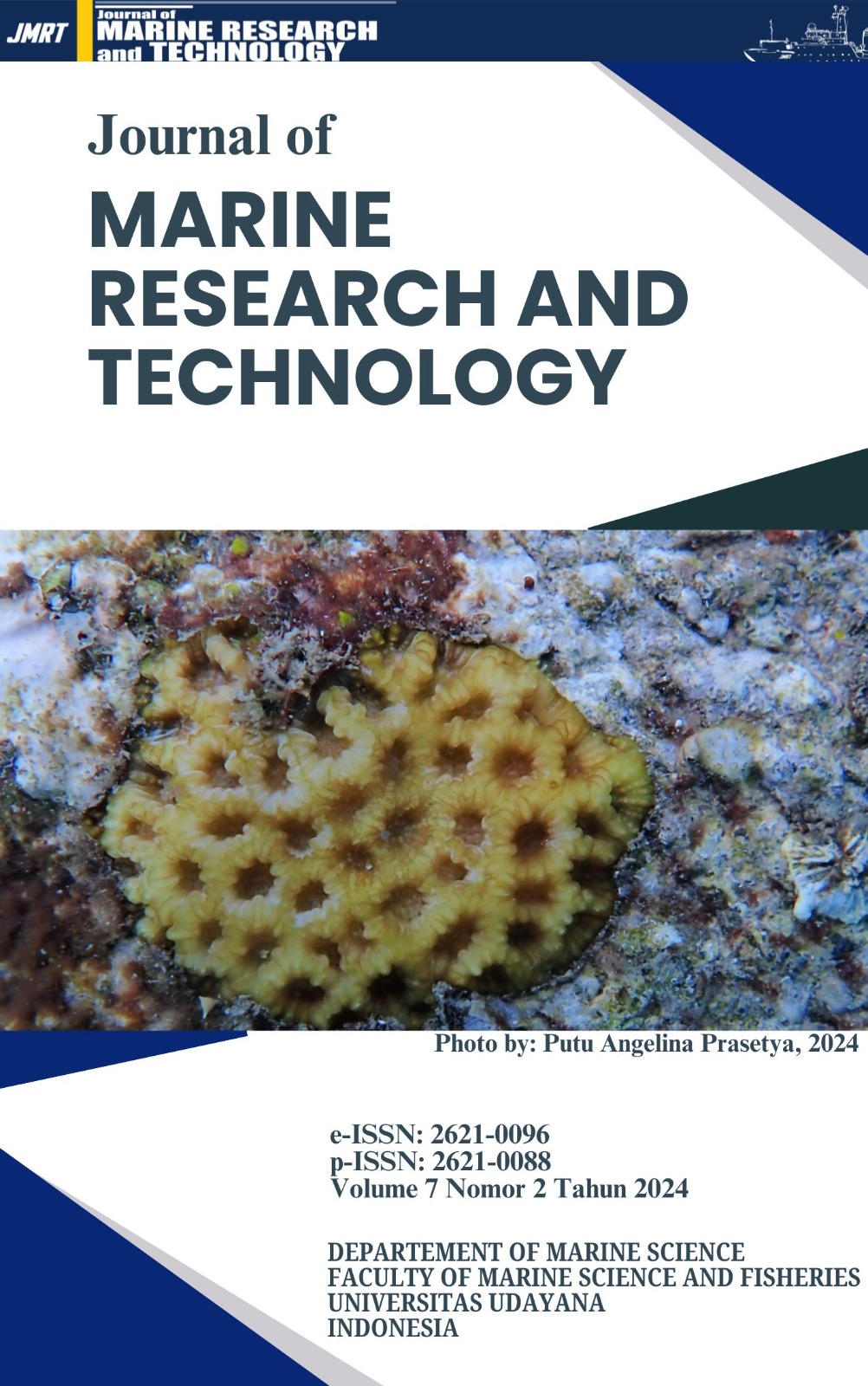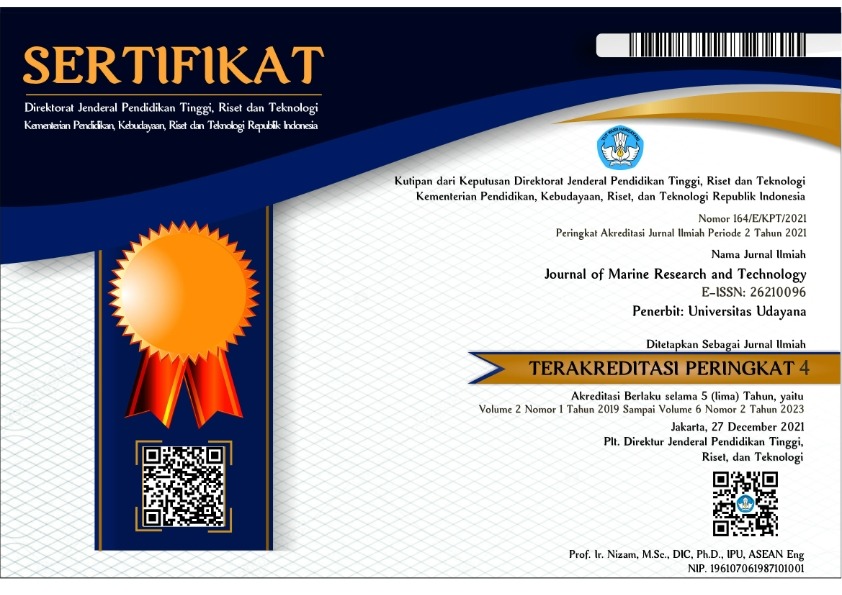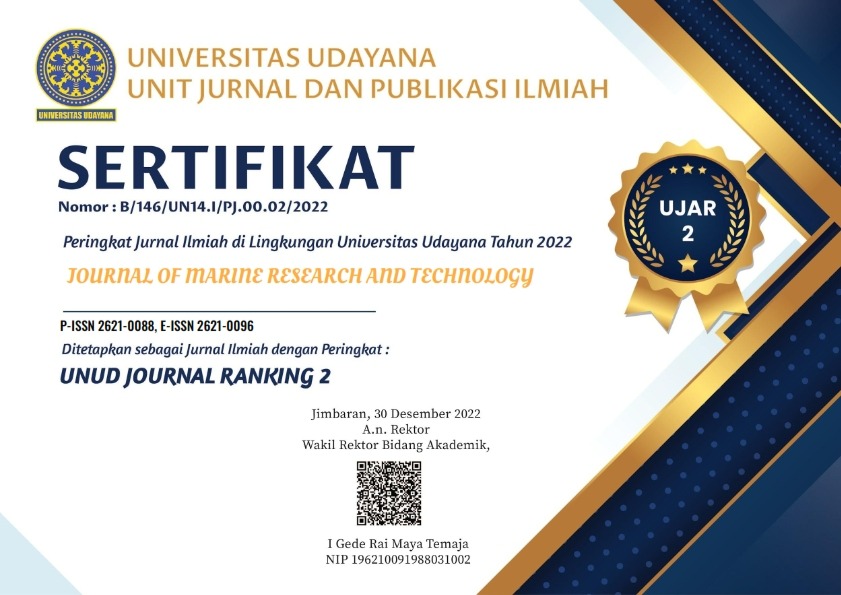Pemetaan Lamun dengan Teknologi Berbasis Machine Learning pada Kawasan Pantai Sanur
Seagrass mapping; Random Forest; SVM; Naïve Bayes
Abstract
Mapping seagrass is essential for understanding the condition of seagrass beds along the coast. Utilizing remote sensing and machine learning techniques can enhance the quality of seagrass observations. This study aims to analyze changes in the extent of seagrass coverage in the Sanur Beach area from 2019 to 2022 using Sentinel-2A satellite imagery and machine learning methods. The data used comprise field measurements and satellite imagery. Field data collection involved employing random sampling and establishing transect lines from Mertasari Beach to Segara Ayu Beach. The research methods used include Random Forest, Support Vector Machine (SVM), and Naïve Bayes classifiers, with model evaluation performed using a confusion matrix and accuracy assessment utilizing Cohen's Kappa. The results show a map of seagrass coverage changes, with the SVM method being identified as the best-performing classifier after accuracy testing. The SVM model achieved the highest average accuracy among the three methods, with an accuracy of 84.5%. The map of seagrass coverage changes indicates that the highest seagrass coverage was recorded in 2021 (268.52 ha), followed by 2019 (249.06 ha), 2020 (248.73 ha), and 2022 (240.49 ha). Future studies could consider employing classifications on coastal ecosystems with a broader range of classes for better ecosystem characterization.
Downloads
Copyright Notice
The copyright to this article is transferred to Journal of Marine Research and Technology (JMRT). The copyright transfer covers the exclusive right and license to reproduce, publish, distribute and archive the article in all forms and media of expression now known or developed in the future, including reprints, translations, photographic reproductions, microform, electronic form (offline, online) or any other reproductions of similar nature.






